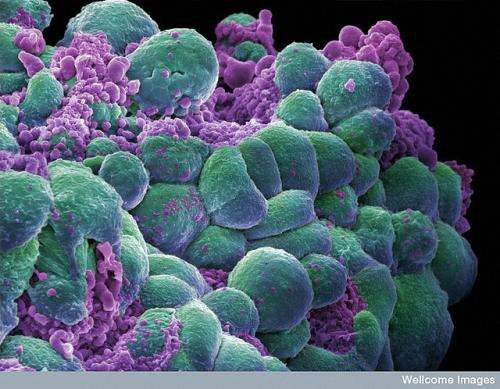Genetic profiling holds potential for managing metastatic cancer

Researching the genetic profile of tumour cells that have spread to cause secondary tumours may provide an avenue to effectively combat metastatic breast cancer.
A recent review by UWA scientists examines the current clinical practice towards metastatic breast cancer and new platforms for improved treatment and drug target development
While the prognosis for women with localised breast cancer at diagnosis has improved enormously, metastatic breast cancer is still considered incurable.
UWA Professor Christobel Saunders and co-author Dr Linda McInnes say changing the genetic features of circulating tumour cells (CTCs) could help predict metastatic disease outcomes and tailored treatment.
Prof Saunders, who is a surgical oncologist and clinical researcher, is part of the national EMPathy project which aims to understand the way circulating breast cancer cells alter from being epithelial to becoming mesenchymal cells.
Meaning, the circulating tumour cells change from originally being of a cell type that generally lines bodily cavities and surfaces to a cell type that makes up most tissues and migrates more easily.
The collaborative EMPathy research group refers to the transformation of metastatic breast cancer cells as epithelial-mesenchymal plasticity (EMP).
"[Circulating tumour] cells move between one stage and the other. We do not know what drives EMP but we do believe that eventually it will be possible to develop drugs that perturb this process," she says.
Liquid biopsy analysis
The authors say profiling the genetic signature of CTCs in a patient's blood sample, referred to as a relatively easy way to obtain 'liquid biopsy', is technically feasible yet challenging.
Prof Saunders says that only a few cells among millions shed daily by a primary tumour can survive the hostile environment of the blood.
Sorting these cells can be done using methods like CellSearch, but current approaches tend to use epithelial markers only.
To address this EMPathy also aims to find new ways to improve CTC detection and isolation.
"You probably need a mixture of epithelial and mesenchymal markers at any point in time [between CTCs entering and leaving the circulation]," she says.
Prof Saunders says she hopes that monitoring the EMP-driven discordance between primary and circulating tumour cells will improve the prediction of a woman's likelihood of metastasis.
She says finding better ways to fight metastasis will depend on developing more knowledge on how to adapt therapy over time in order for treatment to remain effective.
More information: The report is available online: cancerforum.org.au//file/2014/ … _tumour_cells(1).pdf















